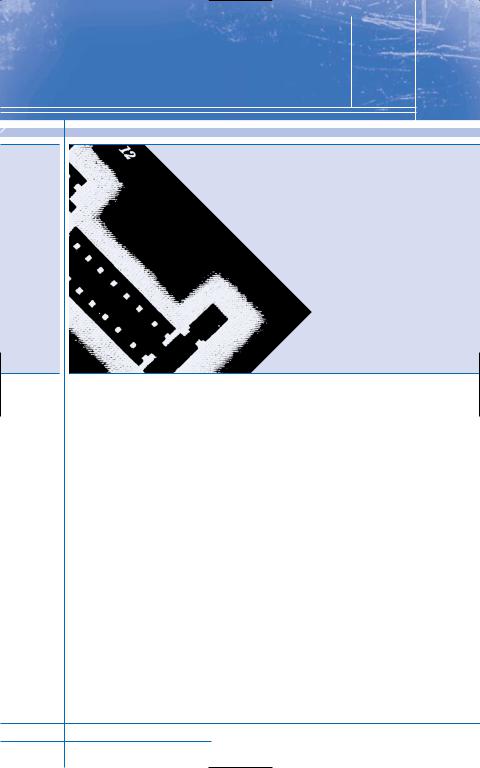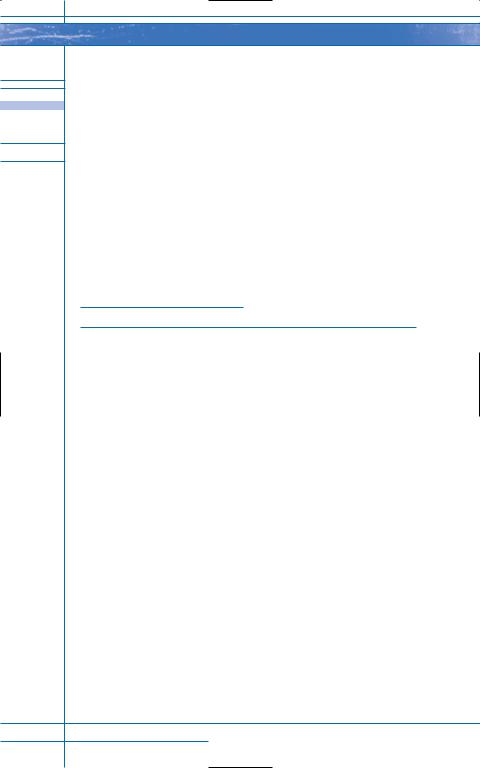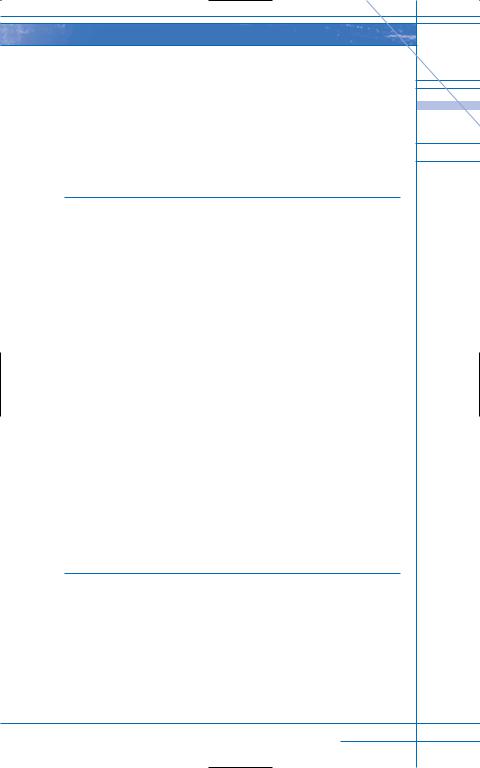
- •Table of Contents
- •Introduction
- •The 5 Dramatic Throughlines
- •The 6 Conflicts
- •The 21 Genres
- •The Replay
- •Fate
- •The Parallel
- •The Episodic
- •The Journey
- •Interactive
- •Metafiction
- •The Slice of Life
- •Introducing the 55 Dramatic Situations
- •Situations 1 & 2
- •Situations 3 & 4
- •Situations 5 & 6
- •Situations 7 & 8
- •Situations 15 & 16
- •Situations 17 & 18
- •Situations 43 & 44
- •Situations 45 & 46
- •Situations 47 & 48
- •Situations 49 & 50
- •Situations 51 & 52
- •Research

Metafiction |
FROM FERRIS BUELLER’S DAY OFF:
SLOANE: What are we going to do?
FERRIS: The question isn’t “what are we going to do,” the question is “what aren’t we going to do?”
CAMERON: Please don’t say we’re not going to take the car home. Please don’t say we’re not going to take the car home. Please don’t say we’re not going to take the car home.
FERRIS: [to the camera] If you had access to a car like this, would you take it back right away?
[beat]
Neither would I.
The Metafiction plot structure is defined as fictional writing that consciously draws attention to itself. It is self-reflex- ive and introverted, posing questions about the relationship
between fiction and reality. In other words, Metafiction will often contain elements that draw the reader out of the story in order to examine the subject of story itself.
Patricia Waugh, author of Metafiction: The Theory and Practice of Self-Conscious Fiction, says, “Metafictional works are those which explore the theory of writing fiction through the practice of writing fiction.” It is, therefore, not a genre but a type of structural technique that calls attention to itself. Think of Ferris Bueller’s Day Off and how the character Ferris speaks into the camera, addressing the audience and breaking down that wall between reality and fiction.
Waugh also says, “Contemporary metafictional writing is both a response and a contribution to an even more thoroughgoing sense that reality or history is provisional: no longer a world of external verities (truths) but a series of constructions, artifices, impermanent structures.”
Some argue that Metafiction has been around since the fifteenth century, starting with Miguel de Cervantes’ Don Quixote. And that
88 Story Structure Architect

Shakespeare’s Hamlet shows metafictional tendencies when Hamlet talks about acting.
Metafiction is sometimes seen as a mature version of the novel, which at its best can challenge the authority of histories. Victoria Orlowski of Emory University explains:
Some works are dubbed “historiographic metafictions” because of their conscious self-reflexivity and concern with history. Their earliest histories contain fictional elements. They are implicit amalgamations of fact and myth. The composition of the “history” itself contains the word “story.” Yet, as realism took root, history came to represent “objective” fact and the novel came to represent “subjective” fiction. … Through its play upon “known truth,” historiographic metafiction questions the absolute knowability of the past … (and can) rediscover the histories of suppressed people such as women or colonized natives.
Metafiction has also been used extensively in film and can be used with great effect in comedies. Think of Mel Brooks’ Spaceballs, Forrest Gump, and Ferris Bueller’s Day Off.
As I write this chapter, there are two new films out titled What the Bleep Do We Know!? and Empathy. Both films combine a fictional narrative story with nonfictional documentary style interviews to further explore the theme and subject.
Metafiction Structure
There may still be a sense of a clear three-act beginning, middle, and end to Metafiction, but it is almost impossible to graph due to its lack of organized structure and form.
According to Patricia Waugh, “To show that reality is no longer understandable or that history is just fiction,” there may be:
•severe over-plotting, as in the use of too many coincidences and miracles (Forrest Gump)
•severe under-plotting to make a statement about language
To show that language is an arbitrary system, there may be:
•blank pages
•pictures (like Kurt Vonnegut’s illustrations in Slaughterhouse-Five)
To show the paradoxical status of author (power vs. no power of author), there may be:
•the appearance of the author, as in the The French Lieutenant’s Woman, or the director, as in The Icicle Thief
Metafiction 89

•conflict between reader and author
•a character that is out of the author’s control
To show the foregrounding of the fiction and reality there may be:
•juxtaposition of fictional characters and historical figures (Forrest Gump)
•discussion of writing or film techniques such as the preface, author, reviewers, and advertisements (Think of Mel Brooks’ Spaceballs and how they stop the film to talk about Spaceballs the movie and how to buy
Spaceballs products.)
This structure can be plot driven, character driven, or possibly narrator driven. There really are no hard and fast rules. I present the following as Act I, Act II, and Act III to keep things consistent with the rest of the book and to give you a frame of reference only. Any of the elements listed can be deleted at whim, as long as the majority of them are in place.
Metafiction Elements
ACT I TRADITIONAL ELEMENTS
•Setup
•Mood or Tone
•Hook, Catalyst, or Inciting Incident
•Serious Problem and/or Goal
•Villain
•Main Characters: all of them introduced here
•Turning Point
ACT I NEW ELEMENTS
The Setup and Hook are great places to lull your reader into the story so you can shock her later. If you really want to call attention to the structure and expectations of story, first bring the reader into a story and get her involved. Then, when you deviate from it later, she will be shocked out of the story and forced to examine what happened.
The characters may have a Serious Problem and/or Goal stated, but that does not mean it has to be the purpose of the story. The Problem and/or Goal can take a back seat for a while if needed or the narrator or other element can step in and out of the story to address it. If the character is sick, you could even include a medical report outlining what the disease is.
90 Story Structure Architect

ACT I QUESTIONS
• What is your overall purpose for writing this story? What do you want to say?
•Will you wait for the really big moments in the story to break the structure? Or use the more quiet moments?
•How do you want the reader to feel? Do you want to just shock her? Or do you want to make her think?
•Will you use Traditional Structure at all?
ACT II TRADITIONAL ELEMENTS
•Problem Intensifies
•Temporary Triumph
•Reversal
•Dark Moment
•Turning Point
ACT II NEW ELEMENTS
The traditional elements here are usually played with in Metafiction and are often overexaggerated or blown all out of proportion. They almost seem silly to have at all. They can be presented in such a formulaic way as to make them seem absurd.
Think about how often you want to show metafictional techniques in this section.
Think about the rules of genre and characterization as well as plot.
ACT II QUESTIONS
•Will you keep lulling your reader back into the story for a while? Or will you constantly call attention to the medium?
•Will you put in any historical elements? Or comedy?
•Do you have a new point to get across in this section? Do you want to say something different?
ACT III TRADITIONAL ELEMENTS
•Final Obstacle
•Climax
•Resolution
ACT III NEW ELEMENTS:
Unlike other types of structure, in Metafiction new characters can come out of nowhere to help the characters
Metafiction 91

out. This is called the “hand of God” technique where things seem contrived, as if God just stepped in and saved everyone.
Again, you can play with traditional elements here.
You can call attention to the ending through imitation—of something from reality (a current event) or another popular piece of fiction.
ACT III QUESTIONS
•Will there be any type of Resolution? Perhaps the story will resolve itself but the questions the reader has will not.
•Have you challenged your reader?
•Did you use any comedy at all?
•Have you considered all of your creative options? (Remember, you can combine historical and fictional characters, run things backward, stop the story to talk to the reader, or even create new words.)
EXAMPLES
Ferris Bueller’s Day Off, JOHN HUGHES
A high-school wise guy is determined to have a day off from school, despite what the principal says. He constantly talks into the camera addressing the audience.
Slaughterhouse-Five, KURT VONNEGUT
Billy Pilgrim is a man who becomes unstuck in time after he is abducted by aliens from the planet Tralfamadore. There is a plot-scrambling aspect to the piece as we follow Pilgrim simultaneously through all phases of his life.
The Things They Carried, TIM O’BRIEN
This is a fictional study of war. O’Brien examines the process of writing itself by using so many layers of writing techniques in one book. He also plays with point of view and discusses within the story what the best way is to tell the story.
92 Story Structure Architect
